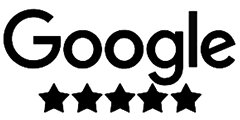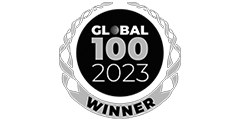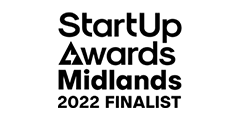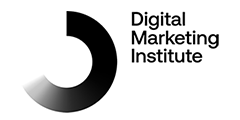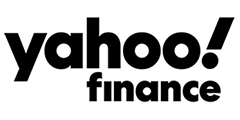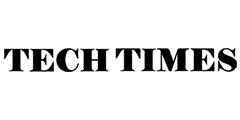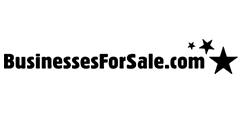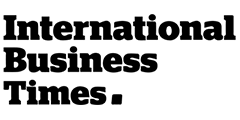
August 11, 2025
By
Kamran Awan
Category
Individual
In the high-stakes world of business, the ability to make good decisions quickly is a superpower. Whether you're a CEO steering a multinational corporation or an entrepreneur juggling multiple tasks, every day brings a barrage of choices—some minor, some life-changing for your company. But here's the catch: the more decisions you make, the harder it becomes to make them well. This phenomenon is called decision fatigue, and it's one of the most underestimated productivity killers in the corporate world.
Decision fatigue isn't about being lazy or indecisive—it's about mental energy depletion. Think of your brain like a smartphone battery. In the morning, you're at 100%, making sharp, clear decisions. But as the day goes on and you handle meetings, emails, negotiations, and operational hiccups, your "mental battery" drains. By late afternoon, your decision-making skills aren't as sharp. You might approve projects without proper scrutiny, avoid making tough calls, or fall into the trap of making impulsive choices.
In business, the cost of poor decisions compounds quickly—missed opportunities, financial losses, damaged relationships, and a dip in team morale. The good news? Decision fatigue is preventable if you understand its mechanics and learn how to manage it strategically.
Understanding decision fatigue
What is decision fatigue?
Decision fatigue is the gradual deterioration of decision quality after a long session of decision-making. It's not about physical exhaustion; it's about cognitive overload. Every choice you make—whether it's picking a new supplier, choosing a marketing strategy, or deciding what to have for lunch—chips away at your mental energy. Eventually, your brain starts looking for shortcuts, and those shortcuts can cost you in business.
The psychology behind it
The concept of decision fatigue gained prominence through research by psychologist Roy F. Baumeister, who discovered that willpower is like a muscle—it can get tired. The more you use it, the weaker it becomes until it's given time to recover. In business terms, this means that a leader's ability to make tough calls in the morning might be much stronger than in the late afternoon after a day full of back-to-back meetings.
This is why some of the world's most successful leaders—like Steve Jobs, Barack Obama, and Mark Zuckerberg—simplified their daily attire. By reducing trivial decisions (like what to wear), they preserved mental bandwidth for high-value decisions.
Common symptoms in business leaders and employees
Decision fatigue doesn't just hit CEOs; it affects employees at all levels. Common symptoms include:
- Procrastination – Putting off decisions until "later" to avoid the mental strain.
- Impulsivity – Making snap decisions without weighing the consequences.
- Overreliance on Default Choices – Opting for the easiest route instead of the best one.
- Irritability and Stress – Reduced patience and increased frustration when faced with options.
The science of mental energy
Willpower as a limited resource
Your brain operates on glucose, a form of energy that fuels both physical and mental activity. Just like muscles burn out after prolonged exertion, your decision-making "muscle" tires after too many choices. This is why, at the end of the day, you might find yourself ordering fast food instead of cooking a healthy dinner—it's not laziness, it's energy depletion.
In the business world, this depletion can mean approving a subpar vendor, missing a red flag in a contract, or agreeing to unrealistic deadlines simply because you want the discussion to end.
How the brain handles decisions
Every decision involves the prefrontal cortex, the part of your brain responsible for reasoning, planning, and self-control. The more decisions you make, the more strain you put on this area, leading to reduced focus and impulse control. Neurological studies show that after prolonged decision-making, your brain starts conserving energy by avoiding decisions altogether or defaulting to the simplest option.
The domino effect of mental exhaustion
Decision fatigue doesn't just affect one choice—it creates a chain reaction. One poor decision can lead to a crisis that requires more decisions, further draining your mental resources. For example, approving a weak marketing plan due to fatigue can cause poor campaign results, which then require emergency meetings and strategic overhauls, putting you in a constant reactive mode instead of a proactive one.
How decision fatigue manifests in business
Declining quality of choices
When you're mentally drained, your brain prioritises speed over accuracy. In business, this might look like signing off on a partnership without due diligence or approving budgets without thorough review. While it saves time in the moment, it often leads to bigger problems down the road.
Procrastination and avoidance
Fatigued decision-makers often push tough calls to "tomorrow," but in a fast-paced business environment, delays can be costly. Opportunities vanish, competitors gain an advantage, and unresolved issues escalate.
Overreliance on default options
When you're tired, you tend to stick to the status quo, even when it's not the best choice. For example, continuing with an underperforming supplier because switching feels too mentally taxing. While this seems safe, it can hinder innovation and growth.
The high cost of decision fatigue in the workplace
Impact on leadership and strategic thinking
Leaders suffering from decision fatigue can become reactive instead of visionary. Instead of making bold, forward-thinking decisions, they settle for whatever is easiest in the moment. This shift can stall innovation and reduce a company's competitive edge.
Team morale and efficiency
Employees notice when leaders hesitate or make erratic decisions. It creates uncertainty, lowers morale, and can even lead to higher turnover. Decision fatigue at the management level trickles down to teams, creating a culture of indecision.
Financial consequences of poor decisions
A single bad business decision can cost thousands—or even millions—of pounds. But when decision fatigue is at play, the risk multiplies. Poor vendor choices, flawed investments, and missed opportunities all add up, hurting both short-term profitability and long-term sustainability.
Strategies to overcome decision fatigue in business
Prioritise high-value decisions early in the day
Your mental energy is at its peak in the morning. That's when you should tackle the most critical and complex decisions. For example, if you're deciding on a new business expansion, schedule the discussion first thing rather than after lunch. This aligns with research showing that the brain is sharper and more analytical during the early hours.
Many successful business leaders follow this rule religiously. They reserve mornings for strategy meetings, financial reviews, or hiring decisions, leaving routine administrative work for the afternoon. This simple change can drastically improve decision quality and reduce the mental load throughout the day.
Simplify routine choices
The fewer small decisions you make, the more energy you save for big ones. This is why many entrepreneurs streamline daily routines—like eating the same breakfast, wearing similar outfits, or automating recurring business processes.
By creating systems and templates for repetitive tasks—such as onboarding employees, responding to standard customer inquiries, or approving expenses—you free up mental capacity. Decision-making energy is too valuable to waste on low-impact choices.
Use decision-making frameworks
Structured frameworks like the Eisenhower Matrix, SWOT Analysis, or Cost-Benefit Analysis can help you make decisions faster without draining mental energy. For instance:
- Eisenhower Matrix helps you decide what's urgent vs. important.
- SWOT Analysis identifies strengths, weaknesses, opportunities, and threats before committing.
- Cost-Benefit Analysis evaluates whether the benefits outweigh the risks.
Delegation as a weapon against decision fatigue
Empower your team to make decisions
One of the biggest mistakes leaders make is trying to decide everything themselves. Not only does this slow down operations, but it also leads to rapid mental burnout.
Effective delegation means giving your team the authority—and trust—to make certain decisions independently. This works best when employees have clear guidelines and understand the company's vision. For example, a sales manager could be empowered to approve discounts up to a certain percentage without seeking CEO approval.
Create clear decision boundaries
When employees know exactly which decisions they can make, they're less likely to escalate minor issues to leadership. This creates a culture of ownership and keeps top executives focused on high-value, strategic choices.
Invest in training
Delegation only works when your team has the skills to make good decisions. Training employees in critical thinking, problem-solving, and company values ensures they make choices aligned with your goals. This training can be formal (workshops, courses) or informal (mentorship, shadowing senior staff).
Technology and decision fatigue reduction
Automate where possible
Automation is a game-changer in reducing decision fatigue. Tools like CRM systems, automated marketing platforms, and AI-driven analytics remove the need for repetitive decision-making. For example, instead of manually deciding which leads to follow up with, an AI tool can prioritise them based on conversion likelihood.
Leverage data-driven decision-making
When decisions are based on hard data rather than gut feeling, the mental strain is significantly reduced. Business intelligence software can analyse performance metrics, market trends, and customer behaviour, presenting clear options rather than endless possibilities.
Standardise processes with SOPs (Standard Operating Procedures)
SOPs eliminate the need to rethink the same processes repeatedly. When your team follows a standard method for handling tasks like client onboarding or inventory management, decisions become automatic, freeing mental space for innovation and strategy.
Healthy lifestyle habits for better decision-making
Nutrition and energy levels
Your brain needs proper fuel to function optimally. Skipping meals or surviving on caffeine and sugar spikes your energy temporarily but leads to crashes that worsen decision fatigue. Business leaders should prioritise balanced meals rich in protein, healthy fats, and complex carbs.
Exercise for mental clarity
Regular physical activity boosts blood flow to the brain and improves mood, which helps with sharper decision-making. Even a 15-minute walk between meetings can reset your mental state and reduce fatigue.
Quality sleep as a business strategy
Sleep is when your brain restores its decision-making capacity. Chronic sleep deprivation compounds decision fatigue, leading to slower reaction times and reduced problem-solving ability. Executives who treat sleep as a priority—rather than a luxury—often see improved productivity and better business outcomes.
Case studies – businesses that beat decision fatigue
Apple and the power of simplicity
Steve Jobs famously wore the same black turtleneck and jeans every day to reduce trivial decisions. More importantly, he focused Apple's product line on a few core items, avoiding the mental drain of managing dozens of variations.
Amazon's "Two-Pizza Rule"
Jeff Bezos implemented a rule that any meeting should be small enough for two pizzas to feed the group. This kept decision-making agile, reduced endless committee debates, and prevented leadership burnout.
Toyota's Kaizen approach
Toyota uses a continuous improvement philosophy where decision-making is shared across all levels of the company. This decentralised structure prevents bottlenecks and reduces decision fatigue for top executives.
The role of mindfulness in preventing decision fatigue
Mindfulness as a mental reset
Mindfulness isn't just a wellness buzzword—it's a practical tool for business leaders dealing with constant choices. Practising mindfulness helps you stay present and focused, preventing the mental scatter that drains energy. A few minutes of deep breathing or guided meditation between meetings can be enough to clear mental clutter and reset decision-making capacity.
Reducing cognitive overload
When you're mindful, you become more aware of unnecessary decisions you can eliminate. For example, instead of jumping between emails, calls, and reports all at once, mindfulness encourages you to approach tasks sequentially. This single-tasking approach reduces the "mental switching costs" that contribute to fatigue.
Creating mindful workspaces
Simple environmental changes—like minimising digital notifications, adding quiet zones in the office, or encouraging short breaks—can support a mindful work culture. Companies like Google and LinkedIn have integrated mindfulness programmes into their workplaces, resulting in improved focus and decision-making among employees.
Breaking down decisions into manageable steps
The power of micro-decisions
Instead of making one massive decision in a single sitting, break it down into smaller, sequential choices. For instance, if you're launching a new product, start by deciding on the target market first, then move to design, then pricing, and so on.
This method reduces overwhelm because you're tackling one piece at a time, preventing mental burnout. It also gives your brain time to recharge between decision phases.
Time-blocking for decision sessions
Rather than making decisions sporadically throughout the day, schedule dedicated "decision-making blocks." For example, a business leader could set aside 9–11 a.m. for strategic decisions and 3–4 p.m. for operational approvals. This structured approach ensures you're not constantly dipping into your mental reserves.
Using checklists and decision trees
Visual tools like checklists or flowcharts reduce mental strain by providing a clear path forward. Pilots, surgeons, and engineers use them for a reason—they prevent errors and help conserve mental bandwidth for critical thinking. In business, these tools can be applied to hiring, project management, and client negotiations.
The cultural side of decision fatigue
Creating a decision-friendly environment
Workplace culture plays a huge role in decision fatigue. In environments where every choice requires multiple approvals, decision-making slows down and leaders burn out faster. A healthy culture empowers individuals to act within their authority without fear of repercussions for reasonable mistakes.
Encouraging collaboration without overload
Collaboration can improve decision quality, but too much of it—like endless meetings—can drain energy. Companies should find the balance between seeking input and avoiding decision paralysis caused by too many voices in the room.
Rewarding smart decision-making
Recognising employees who make well-thought-out decisions reinforces the value of careful, yet efficient, choices. It also motivates others to improve their decision-making skills, creating a ripple effect across the organisation.
Long-term strategies to maintain decision-making capacity
Rotating responsibilities
Leaders who handle the same category of decisions day in and day out are more prone to fatigue. Rotating decision-making responsibilities among qualified team members keeps perspectives fresh and prevents mental burnout.
Scheduled decision-free days
Some companies have implemented "no-meeting" or "decision-free" days to allow employees to focus on deep work without constant interruptions. This helps replenish mental energy and allows for better decision-making the following day.
Continuous learning and adaptation
The business landscape changes rapidly, and sticking to outdated decision-making processes can cause unnecessary stress. Leaders should regularly review and refine how they make decisions, incorporating new tools, methods, and research to keep mental processes sharp.
Conclusion – turning decision fatigue into a competitive advantage
Decision fatigue is a real threat to business success, but it's also an opportunity. Leaders and organisations that learn to manage decision-making energy will consistently outperform those who let mental exhaustion dictate their choices.
By prioritising high-value decisions, simplifying routines, leveraging technology, delegating wisely, and fostering a supportive culture, businesses can protect their most valuable resource—the mental clarity of their decision-makers.
In the long run, overcoming decision fatigue isn't just about personal productivity—it's about strategic resilience. The companies that thrive in the future will be the ones that make fewer but better decisions, consistently and confidently.
FAQs
Q: Can decision fatigue really affect a company's bottom line?
A: Absolutely. Poor decisions—especially in finance, operations, and strategy—can cost businesses thousands or even millions over time.
Q: How can small businesses combat decision fatigue with limited resources?
A: Small businesses can focus on simplifying processes, automating repetitive tasks, and delegating responsibilities where possible.
Q: Is decision fatigue the same as burnout?
A: Not quite. Burnout is a broader state of emotional and physical exhaustion, while decision fatigue specifically refers to a decline in decision-making quality after prolonged choice-making.
Q: Can decision fatigue be eliminated completely?
A: Probably not, but it can be significantly reduced through strategic time management, automation, and lifestyle adjustments.
Q: What's the quickest way to recover from decision fatigue during a busy day?
A: A short break, healthy snack, or quick walk can help recharge mental energy and restore focus.
To find out more about how you can start your own Digital Agency, please contact a member of our team.
Until next time, take care.
Share this Post
